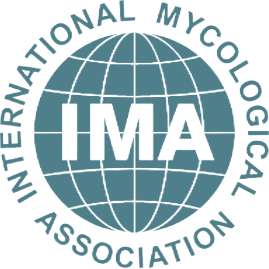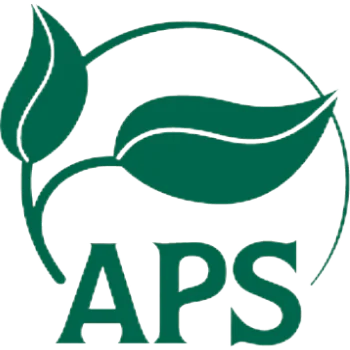Open Access


Molecules, volume 23, issue 7, pages 1594
Application of the Fluorescent Dye BODIPY in the Study of Lipid Dynamics of the Rice Blast Fungus Magnaporthe oryzae
Wang Jiaoyu
1
,
Guo Xiaoyu
1, 2
,
Li Ling
1, 3
,
Qiu Haiping
1
,
Zhang Zhen
1
,
Wang Yanli
1
,
Sun Guochang
1
1
State Key Laboratory Breeding Base for Zhejiang Sustainable Pest and Disease Control, Institute of Plant Protection and Microbiology, Zhejiang Academy of Agricultural Sciences, Hangzhou 310021, China
|
2
College of Chemistry and Life Sciences, Zhejiang Normal University, Jinhua 321004, China
|
3
The Key Laboratory for Quality Improvement of Agricultural Products of Zhejiang Province, School of Agricultural and Food Sciences, Zhejiang Agriculture and Forest University, Hangzhou 311300, China
|
Publication type: Journal Article
Publication date: 2018-06-30
PubMed ID:
29966327
Organic Chemistry
Drug Discovery
Physical and Theoretical Chemistry
Pharmaceutical Science
Molecular Medicine
Analytical Chemistry
Chemistry (miscellaneous)
Abstract
Rice blast is one of the most serious diseases affecting rice yield which is caused by Magnaporthe oryzae, a model organism for studies on plant pathogenic fungi. Lipids stored in M. oryzae cells have been shown to be crucial for the development of appressorium turgor and the ability of the pathogen to cause infection. Nile red staining is a common method to study lipid dynamics in phytopathogenic fungi. However, the disadvantages of this dye include its wide spectrum, poor water solubility, and susceptibility to quenching. Boron dipyrromethene (BODIPY) is a new type of fluorescent dye that has a different emission wavelength to that of Nile red as well as many desirable spectral and chemical properties. In this study, we used BODIPY to stain the lipids in M. oryzae cells to seek a possible substitute to Nile red in the study of lipid dynamics in plant pathogenic fungi. Our data showed that through simple and routine procedures, BODIPY was able to distinctly label lipids in the cells of mycelia and conidia. The positions of lipids labeled by BODIPY were essentially identical to those labeled by Nile red, but with more clear fluorescence labelling, lower background, and higher specificity. The use of BODIPY to stain germinating M. oryzae conidia allowed the lipid dynamics to be clearly tracked during this process. We also achieved double and multiple fluorescent staining conidia by combining BODIPY with the red fluorescent protein mCherry and other fluorescent dyes, such as Calcofluor white and DAPI, in conidia, mycelia, and sexual structures of M. oryzae. These results indicate that BODIPY is an ideal fluorescent dye for staining fungal lipids and provide a method for the study of the lipid dynamics and lipid metabolism in plant pathogenic fungi.
Citations by journals
|
1
2
3
|
|
|
Journal of Photochemistry and Photobiology A: Chemistry

|

Journal of Photochemistry and Photobiology A: Chemistry
3 publications, 13.04%
|
|
Spectrochimica Acta - Part A: Molecular and Biomolecular Spectroscopy

|

Spectrochimica Acta - Part A: Molecular and Biomolecular Spectroscopy
2 publications, 8.7%
|
|
Journal of Fungi

|

Journal of Fungi
2 publications, 8.7%
|
|
Bioengineering

|

Bioengineering
1 publication, 4.35%
|
|
Journal of Molecular Liquids

|

Journal of Molecular Liquids
1 publication, 4.35%
|
|
Mycological Progress

|

Mycological Progress
1 publication, 4.35%
|
|
Materials

|

Materials
1 publication, 4.35%
|
|
Molecules

|

Molecules
1 publication, 4.35%
|
|
Sustainability

|

Sustainability
1 publication, 4.35%
|
|
Pathogens

|

Pathogens
1 publication, 4.35%
|
|
Frontiers in Plant Science

|

Frontiers in Plant Science
1 publication, 4.35%
|
|
International Journal of Molecular Sciences

|

International Journal of Molecular Sciences
1 publication, 4.35%
|
|
IMA Fungus

|

IMA Fungus
1 publication, 4.35%
|
|
Microbiological Research

|

Microbiological Research
1 publication, 4.35%
|
|
Materials Today: Proceedings

|

Materials Today: Proceedings
1 publication, 4.35%
|
|
Journal of Applied Microbiology

|

Journal of Applied Microbiology
1 publication, 4.35%
|
|
Microbiology spectrum

|

Microbiology spectrum
1 publication, 4.35%
|
|
Molecular Plant-Microbe Interactions

|

Molecular Plant-Microbe Interactions
1 publication, 4.35%
|
|
Methods in Molecular Biology

|

Methods in Molecular Biology
1 publication, 4.35%
|
|
1
2
3
|
Citations by publishers
|
1
2
3
4
5
6
7
8
|
|
|
Elsevier

|

Elsevier
8 publications, 34.78%
|
|
Multidisciplinary Digital Publishing Institute (MDPI)

|

Multidisciplinary Digital Publishing Institute (MDPI)
8 publications, 34.78%
|
|
Springer Nature

|

Springer Nature
2 publications, 8.7%
|
|
Frontiers Media S.A.

|

Frontiers Media S.A.
1 publication, 4.35%
|
|
International Mycological Association

|

International Mycological Association
1 publication, 4.35%
|
|
Wiley

|

Wiley
1 publication, 4.35%
|
|
American Society for Microbiology

|

American Society for Microbiology
1 publication, 4.35%
|
|
American Phytopathological Society

|

American Phytopathological Society
1 publication, 4.35%
|
|
1
2
3
4
5
6
7
8
|
- We do not take into account publications that without a DOI.
- Statistics recalculated only for publications connected to researchers, organizations and labs registered on the platform.
- Statistics recalculated weekly.
{"yearsCitations":{"type":"bar","data":{"show":true,"labels":[2018,2019,2020,2021,2022,2023,2024],"ids":[0,0,0,0,0,0,0],"codes":[0,0,0,0,0,0,0],"imageUrls":["","","","","","",""],"datasets":[{"label":"Citations number","data":[1,1,3,4,8,5,1],"backgroundColor":["#3B82F6","#3B82F6","#3B82F6","#3B82F6","#3B82F6","#3B82F6","#3B82F6"],"percentage":["4.35","4.35","13.04","17.39","34.78","21.74","4.35"],"barThickness":null}]},"options":{"indexAxis":"x","maintainAspectRatio":true,"scales":{"y":{"ticks":{"precision":0,"autoSkip":false,"font":{"family":"Montserrat"},"color":"#000000"}},"x":{"ticks":{"stepSize":1,"precision":0,"font":{"family":"Montserrat"},"color":"#000000"}}},"plugins":{"legend":{"position":"top","labels":{"font":{"family":"Montserrat"},"color":"#000000"}},"title":{"display":true,"text":"Citations per year","font":{"size":24,"family":"Montserrat","weight":600},"color":"#000000"}}}},"journals":{"type":"bar","data":{"show":true,"labels":["Journal of Photochemistry and Photobiology A: Chemistry","Spectrochimica Acta - Part A: Molecular and Biomolecular Spectroscopy","Journal of Fungi","Bioengineering","Journal of Molecular Liquids","Mycological Progress","Materials","Molecules","Sustainability","Pathogens","Frontiers in Plant Science","International Journal of Molecular Sciences","IMA Fungus","Microbiological Research","Materials Today: Proceedings","Journal of Applied Microbiology","Microbiology spectrum","Molecular Plant-Microbe Interactions","Methods in Molecular Biology"],"ids":[18164,6337,3021,22376,13597,24365,25198,1770,17374,20044,1823,14627,8398,4808,24147,13022,17855,20428,3516],"codes":[0,0,0,0,0,0,0,0,0,0,0,0,0,0,0,0,0,0,0],"imageUrls":["\/storage\/images\/resized\/GDnYOu1UpMMfMMRV6Aqle4H0YLLsraeD9IP9qScG_medium.webp","\/storage\/images\/resized\/GDnYOu1UpMMfMMRV6Aqle4H0YLLsraeD9IP9qScG_medium.webp","\/storage\/images\/resized\/MjH1ITP7lMYGxeqUZfkt2BnVLgjkk413jwBV97XX_medium.webp","\/storage\/images\/resized\/MjH1ITP7lMYGxeqUZfkt2BnVLgjkk413jwBV97XX_medium.webp","\/storage\/images\/resized\/GDnYOu1UpMMfMMRV6Aqle4H0YLLsraeD9IP9qScG_medium.webp","\/storage\/images\/resized\/voXLqlsvTwv5p3iMQ8Dhs95nqB4AXOG7Taj7G4ra_medium.webp","\/storage\/images\/resized\/MjH1ITP7lMYGxeqUZfkt2BnVLgjkk413jwBV97XX_medium.webp","\/storage\/images\/resized\/MjH1ITP7lMYGxeqUZfkt2BnVLgjkk413jwBV97XX_medium.webp","\/storage\/images\/resized\/MjH1ITP7lMYGxeqUZfkt2BnVLgjkk413jwBV97XX_medium.webp","\/storage\/images\/resized\/MjH1ITP7lMYGxeqUZfkt2BnVLgjkk413jwBV97XX_medium.webp","\/storage\/images\/resized\/4QWA67eqfcfyOiA8Wk7YnqroHFqQbTsmDJUYTCTg_medium.webp","\/storage\/images\/resized\/MjH1ITP7lMYGxeqUZfkt2BnVLgjkk413jwBV97XX_medium.webp","\/storage\/images\/resized\/Hg8vxlbnMv82qWA81e3yv3RtX62goJtAWM0ETCzE_medium.webp","\/storage\/images\/resized\/GDnYOu1UpMMfMMRV6Aqle4H0YLLsraeD9IP9qScG_medium.webp","\/storage\/images\/resized\/GDnYOu1UpMMfMMRV6Aqle4H0YLLsraeD9IP9qScG_medium.webp","\/storage\/images\/resized\/bRyGpdm98BkAUYiK1YFNpl5Z7hPu6Gd87gbIeuG3_medium.webp","\/storage\/images\/resized\/VPE7q24PXoHr5SS2SqfEgxccSMUxWLfZINOX60uo_medium.webp","\/storage\/images\/resized\/WefTARavmR2BfDYJXPWkOUATcVrF2O66GEq02oQj_medium.webp","\/storage\/images\/resized\/voXLqlsvTwv5p3iMQ8Dhs95nqB4AXOG7Taj7G4ra_medium.webp"],"datasets":[{"label":"","data":[3,2,2,1,1,1,1,1,1,1,1,1,1,1,1,1,1,1,1],"backgroundColor":["#3B82F6","#3B82F6","#3B82F6","#3B82F6","#3B82F6","#3B82F6","#3B82F6","#3B82F6","#3B82F6","#3B82F6","#3B82F6","#3B82F6","#3B82F6","#3B82F6","#3B82F6","#3B82F6","#3B82F6","#3B82F6","#3B82F6"],"percentage":[13.04,8.7,8.7,4.35,4.35,4.35,4.35,4.35,4.35,4.35,4.35,4.35,4.35,4.35,4.35,4.35,4.35,4.35,4.35],"barThickness":13}]},"options":{"indexAxis":"y","maintainAspectRatio":false,"scales":{"y":{"ticks":{"precision":0,"autoSkip":false,"font":{"family":"Montserrat"},"color":"#000000"}},"x":{"ticks":{"stepSize":null,"precision":0,"font":{"family":"Montserrat"},"color":"#000000"}}},"plugins":{"legend":{"position":"top","labels":{"font":{"family":"Montserrat"},"color":"#000000"}},"title":{"display":true,"text":"Journals","font":{"size":24,"family":"Montserrat","weight":600},"color":"#000000"}}}},"publishers":{"type":"bar","data":{"show":true,"labels":["Elsevier","Multidisciplinary Digital Publishing Institute (MDPI)","Springer Nature","Frontiers Media S.A.","International Mycological Association","Wiley","American Society for Microbiology","American Phytopathological Society"],"ids":[17,202,8,208,2751,11,142,7498],"codes":[0,0,0,0,0,0,0,0],"imageUrls":["\/storage\/images\/resized\/GDnYOu1UpMMfMMRV6Aqle4H0YLLsraeD9IP9qScG_medium.webp","\/storage\/images\/resized\/MjH1ITP7lMYGxeqUZfkt2BnVLgjkk413jwBV97XX_medium.webp","\/storage\/images\/resized\/voXLqlsvTwv5p3iMQ8Dhs95nqB4AXOG7Taj7G4ra_medium.webp","\/storage\/images\/resized\/4QWA67eqfcfyOiA8Wk7YnqroHFqQbTsmDJUYTCTg_medium.webp","\/storage\/images\/resized\/Hg8vxlbnMv82qWA81e3yv3RtX62goJtAWM0ETCzE_medium.webp","\/storage\/images\/resized\/bRyGpdm98BkAUYiK1YFNpl5Z7hPu6Gd87gbIeuG3_medium.webp","\/storage\/images\/resized\/VPE7q24PXoHr5SS2SqfEgxccSMUxWLfZINOX60uo_medium.webp","\/storage\/images\/resized\/WefTARavmR2BfDYJXPWkOUATcVrF2O66GEq02oQj_medium.webp"],"datasets":[{"label":"","data":[8,8,2,1,1,1,1,1],"backgroundColor":["#3B82F6","#3B82F6","#3B82F6","#3B82F6","#3B82F6","#3B82F6","#3B82F6","#3B82F6"],"percentage":[34.78,34.78,8.7,4.35,4.35,4.35,4.35,4.35],"barThickness":13}]},"options":{"indexAxis":"y","maintainAspectRatio":false,"scales":{"y":{"ticks":{"precision":0,"autoSkip":false,"font":{"family":"Montserrat"},"color":"#000000"}},"x":{"ticks":{"stepSize":null,"precision":0,"font":{"family":"Montserrat"},"color":"#000000"}}},"plugins":{"legend":{"position":"top","labels":{"font":{"family":"Montserrat"},"color":"#000000"}},"title":{"display":true,"text":"Publishers","font":{"size":24,"family":"Montserrat","weight":600},"color":"#000000"}}}}}
Metrics
Cite this
GOST |
RIS |
BibTex |
MLA
Cite this
GOST
Copy
Wang J. et al. Application of the Fluorescent Dye BODIPY in the Study of Lipid Dynamics of the Rice Blast Fungus Magnaporthe oryzae // Molecules. 2018. Vol. 23. No. 7. p. 1594.
GOST all authors (up to 50)
Copy
Wang J., Guo X., Li L., Qiu H., Zhang Z., Wang Y., Sun G. Application of the Fluorescent Dye BODIPY in the Study of Lipid Dynamics of the Rice Blast Fungus Magnaporthe oryzae // Molecules. 2018. Vol. 23. No. 7. p. 1594.
Cite this
RIS
Copy
TY - JOUR
DO - 10.3390/molecules23071594
UR - https://doi.org/10.3390%2Fmolecules23071594
TI - Application of the Fluorescent Dye BODIPY in the Study of Lipid Dynamics of the Rice Blast Fungus Magnaporthe oryzae
T2 - Molecules
AU - Wang, Jiaoyu
AU - Guo, Xiaoyu
AU - Li, Ling
AU - Qiu, Haiping
AU - Zhang, Zhen
AU - Wang, Yanli
AU - Sun, Guochang
PY - 2018
DA - 2018/06/30 00:00:00
PB - Multidisciplinary Digital Publishing Institute (MDPI)
SP - 1594
IS - 7
VL - 23
PMID - 29966327
SN - 1420-3049
ER -
Cite this
BibTex
Copy
@article{2018_Wang,
author = {Jiaoyu Wang and Xiaoyu Guo and Ling Li and Haiping Qiu and Zhen Zhang and Yanli Wang and Guochang Sun},
title = {Application of the Fluorescent Dye BODIPY in the Study of Lipid Dynamics of the Rice Blast Fungus Magnaporthe oryzae},
journal = {Molecules},
year = {2018},
volume = {23},
publisher = {Multidisciplinary Digital Publishing Institute (MDPI)},
month = {jun},
url = {https://doi.org/10.3390%2Fmolecules23071594},
number = {7},
pages = {1594},
doi = {10.3390/molecules23071594}
}
Cite this
MLA
Copy
Wang, Jiaoyu, et al. “Application of the Fluorescent Dye BODIPY in the Study of Lipid Dynamics of the Rice Blast Fungus Magnaporthe oryzae.” Molecules, vol. 23, no. 7, Jun. 2018, p. 1594. https://doi.org/10.3390%2Fmolecules23071594.
